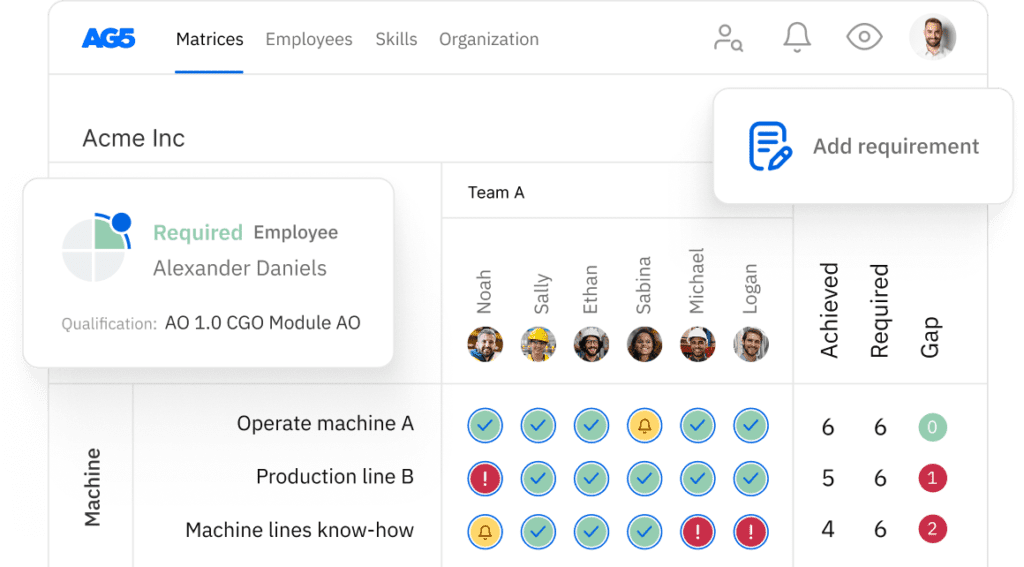Why businesses should be embracing the 70:20:10 method
During this article, we delve into the 70:20:10 method, uncovering its principles and benefits. Learn how this framework can revolutionize workplace learning and development.

Investing in your staff’s schooling and training is a great way to raise your organization’s game. This applies now more than ever. We live in a digital era in which changes follow one another in rapid succession, and we’re being forced to learn more, all the time – even in the workplace.
The 70:20:10 method or model is the underlying principle upon which performance support rests. It’s a method you can use to shape and guide your organization’s learning more effectively.
But what is the 70:20:10 method exactly? How does it work? And why should your business be embracing this model? We’ll be providing answers to all these questions in this article.
ContentsCopied
- Formal vs. informal learning
- What is the 70:20:10 method?
- Who should be using the 70:20:10 method?
- Reasons to embrace the 70:20:10 method
Formal vs. informal learningCopied
Before we start delving deeper into the principles of 70:20:10, it’s important to take a look at how we actually learn. The way in which we learn can be split into one of three categories.
- Informal learning is generally a byproduct of other activities and takes place while we’re dealing with the subject in question. It’s sometimes referred to as ‘unintentional’ learning and as a rule, doesn’t take place in an organized learning environment.
- Formal learning focuses specifically on earning a recognized qualification or certification. This type of learning is tied closely to special-purpose environments such as institutes of education.
- Non-formal learning is, however, both organized and targeted, yet less structured and systematic than formal learning. It’s not specifically intended for earning a qualification or certification, nor is the place of learning (e.g. a library, community center, or office space) specifically set up as a formal learning environment.
Nowadays, the boundaries between these clearly defined types of teaching or learning seem to be becoming more and more blurred. Digital teaching methods and tools are also making the physical location where we learn less and less relevant.
What’s more, learning in the workplace is being integrated into daily work routines increasingly frequently. The 70:20:10 method is a hybrid form mixing both formal and informal learning.
What is the 70:20:10 method?Copied
But what do we mean by the 70:20:10 method exactly? The numbers are percentages, corresponding to the relative effect that a specific method of learning has on all that we learn.
In a nutshell …
Most – 70% – of what we learn takes place in the workplace, for example, following instructions, watching a more experienced co-worker, or practicing newly acquired skills.
A further 20% corresponds to more complex subject matter, mastered by means of social learning. The skills and knowledge that you learn in this category are acquired through interaction with co-workers and their feedback.
The final 10% corresponds to formal learning, comprising education programs, training courses, workshops, or e-learning programs.
The ideas behind 70:20:10 are discussed in greater detail in the book 702010 towards 100% Performance written by Jos Arets, Vivian Heijnen, and Charles Jennings. The model is sometimes referred to as the ‘Jennings Model’.
And bear in mind that the percentages aren’t hard and fixed. It simply isn’t the case that 70% of everything we learn always comes from practical and/or work experience. The percentages serve merely as a rule of thumb, which you can use to design work-related learning programs, focusing more on practical knowledge rather than pure theory.
70% – on the job
The 70:20:10 learning model places emphasis on learning ‘in the workplace’ or ‘on the job’ because of a growing need to create an ongoing learning environment. The world is changing faster and faster, as is the rate at which knowledge is becoming outdated. Staff are increasingly expected to be able to learn at the ‘speed of business’. After all, time is money …
The Jennings Model enables people to learn informally on the job. Knowledge is put into practice at once and retained in long-term memory far better.
What’s more, informal learning and on-the-job learning are both aligned with human beings’ propensity to learn by ‘trial and error’.
20% – social
Skills and knowledge generally only have practical use if they provide added value within an organization. It’s virtually impossible to avoid working with others when applying newly acquired skills as part of existing operating processes. This is the realm of ‘social learning’.
Because this form of learning focuses heavily on collaboration, coaching, and feedback, social learning plays a key role in the dissemination of knowledge throughout a company.
10% – formal
The modest percentage corresponding to formal learning might create the impression that this form of learning isn’t important. However, nothing could be further from the truth!
Learning on the job and social learning are only possible, given a sound theoretical basis. You can’t avoid more formal methods of learning altogether, certainly not for more complicated professions that rely on being highly skilled, mathematically or linguistically. The 10% is, therefore, key to plucking the fruit of the 70%.

Who should be using the 70:20:10 method?Copied
The 70:20:10 learning method isn’t necessarily ideal for every employee or every situation. It’s less relevant, for example, to highly repetitive work. It is, however, relevant to keeping up to date in more dynamic professions that deal with new developments (IT, policymaking) or that require staff to learn or acquire new skills on a regular basis.
What’s more, it’s important to structure the working environment to stimulate and encourage learning. Staff who perform the same task over and over again won’t learn anything new. Managers can implement on-the-job learning by providing their staff with the right tools and inspiring learning environments and methods.
Tip: Read our blog post about performance support in which we list the best software and tools.
Reasons to embrace the 70:20:10 methodCopied
There are many reasons for an organization to embrace the 70:20:10 method. We’ve listed the main reasons below.
1. Skills vs. qualifications
Job opportunities and knowledge in the traditional labor market used to be determined by diplomas, job experience, job titles, and fixed knowledge. But those days are by and large behind us.
There’s a clear shift afoot towards ‘lifelong learning’. Informal skills and experience gained ‘on the job’ are becoming increasingly important. This demands learning methods that allow staff to learn in the workplace or on the job.
2. Quicker, smoother, cheaper …
The 70:20:10 method offers businesses the opportunity to implement training programs more quickly, more smoothly, and more cheaply. Less time and money need to be invested in theoretical schooling because staff can hit the ground running while learning on the job.
The ‘practice makes perfect’ approach really has proved in practice to be the best way to master new skills.
3. Always up to date …
Most of what we learn at university or the start of our career has already gotten lost in the recesses of our brain by the time we actually need to apply the skill or knowledge in practice.
A well-implemented 70:20:10 method enables staff to retrieve and use information efficiently at the instant it’s needed. What’s more, the method helps ensure that acquired information gets stored in both long-term memory and working memory.
4. Technology – the great enabler
Thanks to modern technology, learning using the 70:20:10 method is becoming increasingly easier and more accepted. Nowadays, we have access to fast internet anywhere, anytime, and a ‘supercomputer’ in our pocket.
Smart apps help us find solutions to specific problems or challenges immediately. Or they allow experts to ‘take a look’ remotely without them having to be physically present on site.

Mapping staff skillsCopied
Developing and honing skills is often more important these days than having the right qualification or certificate hanging on the wall. In light of these developments, it’s vital that you map and keep track of who exactly has which skills within your organization.
AG5’s software is the solution to this challenge. Using skills management software, you eliminate all the pitfalls and complexity that are created when you use spreadsheets, such as MS Excel, for your skills matrices.
- enter proficiency updates and training results directly from the work floor
- put together project teams explicitly based on expertise and experience
- set up notifications for individual staff members, groups, or certification about to lapse or expire
- assign the right operator to a specific task, e.g. ‘retool production line’
- find the best replacement for a staff member off sick
- map skills and knowledge across multiple sites/locations
- replicate organizational structures and the relationships between staff members and qualifications using drag-and-drop menus
Embracing the 70:20:10 method …Copied
The ideal training program uses both formal and informal learning methods. Formal learning lays a solid theoretical basis, and informal learning embeds newly acquired knowledge and skills into daily working practice. The 70:20:10 method combines the best of both worlds and provides staff a full range of options to hone their skills and knowledge as efficiently as possible.
If you’d like to learn more about skills management and the 70:20:10 method, please get in touch with us for specific advice or to schedule a personal demo in which we’ll show you how our software could be helping you!

